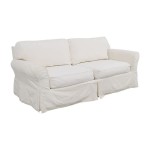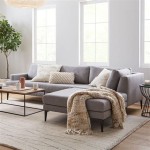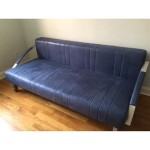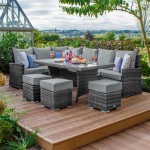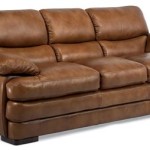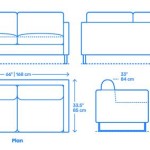What Is The Best Sofa Bed On the Market?
The quest for the best sofa bed necessitates a comprehensive understanding of various factors, ranging from comfort and functionality to durability and style. Sofa beds, also known as sleeper sofas, represent a versatile furniture solution, offering both seating during the day and a sleeping surface when needed. The "best" sofa bed is subjective and depends heavily on individual needs, space constraints, and budget. However, a thorough evaluation of key features can guide consumers toward making an informed decision. This article will explore critical aspects that contribute to a sofa bed's overall quality and suitability, focusing on functionality, comfort, materials, and style.
The modern sofa bed market is incredibly diverse, encompassing a wide range of designs, mechanisms, and price points. From compact models suitable for small apartments to larger, sectional sofa beds ideal for accommodating multiple guests, the options are plentiful. Navigating this landscape requires careful consideration of how the sofa bed will be used, the frequency of its conversion into a bed, and the aesthetic impact it will have on the living space. Therefore, a systematic approach to evaluating different models is essential for identifying the "best" sofa bed for any given situation.
Evaluating the Mechanism and Conversion Process
The mechanism used to convert a sofa into a bed is a central element in determining its overall functionality and user-friendliness. Several types of mechanisms exist, each with its own advantages and disadvantages. The most common mechanisms include pull-out, click-clack, and folding designs.
Pull-out mechanisms, also known as innerspring mechanisms, feature a mattress hidden beneath the seat cushions that can be pulled out to create a sleeping surface. These mechanisms often provide a more traditional bed-like experience, with a dedicated mattress offering better support and comfort compared to other types. However, pull-out sofa beds tend to be heavier and require more space to operate, making them less suitable for smaller rooms.
Click-clack mechanisms, also referred to as futon-style sofa beds, convert by clicking the backrest down to a flat position. These are are generally simpler and more affordable than pull-out models. Their simplicity often translates to less robust long-term durability; the click-clack mechanism is often the failure point on this type of sofa bed. The comfort level can vary depending on the padding and support provided. These sofa beds tend to have a less refined aesthetic than sofa beds with hidden mechanisms.
Folding sofa beds often involve a mattress that folds out from within the sofa frame. These models are frequently more compact than pull-out versions, making them suitable for smaller spaces. The mattress quality can vary significantly, so it's essential to assess the level of support and comfort offered. Consider how easily the mechanism folds and unfolds. A smooth, effortless conversion process enhances the user experience.
When evaluating the mechanism, consider the ease of use. Can the average person convert the sofa bed quickly and easily? In addition, consider the storage space required for the bed. Does the transformation require moving around other furniture pieces to accommodate the open bed? These practical considerations are crucial for daily usage.
Assessing Comfort and Mattress Quality
The comfort of both the sofa and the bed is paramount when selecting a sofa bed. A sofa bed should provide comfortable seating during the day and a supportive sleeping surface at night. Mattress quality is a significant contributor to overall comfort, influencing factors such as support, pressure relief, and temperature regulation.
Mattress types commonly found in sofa beds include innerspring, memory foam, and hybrid options. Innerspring mattresses offer a traditional feel with bounce and support, but can sometimes lack pressure relief. Memory foam mattresses conform to the body, providing excellent pressure relief and reducing motion transfer. Although more pricey, hybrid mattresses combine the benefits of both innerspring and memory foam, offering a balance of support and comfort. The thickness of the mattress also plays a vital role in comfort. Thicker mattresses generally provide better support and cushioning.
The quality of the sofa cushions is equally important for seating comfort. High-density foam cushions offer good support and retain their shape over time, while down-filled cushions provide a plush and luxurious feel but require more maintenance. A combination of foam and fiber can offer a good balance of comfort and durability. Seat depth, back height, and armrest design all contribute to the overall seating experience. Consider the ergonomics of the sofa to ensure it provides adequate support and promotes good posture.
When assessing comfort, consider the use case. Will the sofa bed be primarily used as a sofa or a bed? If it's intended for frequent use as a bed, prioritize mattress quality. If it's mainly used as a sofa with occasional sleepovers, seating comfort should be the primary focus. Reading customer reviews and, if possible, testing the sofa bed in person can provide valuable insights into its comfort level.
Examining Materials, Durability, and Style
The materials used in the construction of a sofa bed significantly impact its durability, longevity, and aesthetic appeal. The frame material, upholstery fabric, and hardware all contribute to the overall quality and lifespan of the furniture piece.
A solid hardwood frame provides the most robust and durable foundation for a sofa bed. Softwood frames, such as pine, are less expensive but may not withstand heavy use over time. Metal frames offer a lightweight and sturdy alternative, but should be constructed with high-gauge steel to prevent bending or warping. The frame should be properly joined and reinforced at stress points to ensure long-term stability. Look for features such as corner blocks and screws securing the frame components.
Upholstery fabrics vary widely in terms of durability, stain resistance, and aesthetic appeal. Common fabric choices include microfiber, linen, cotton, leather, and synthetic blends. Microfiber is a durable and easy-to-clean option, making it suitable for households with children or pets. Linen offers a natural and breathable option, but can be prone to wrinkles. Cotton is a versatile and affordable option. Leather provides a luxurious look and feel, but can be more expensive and require special care. Synthetic blends offer a combination of durability, stain resistance, and affordability.
The style of the sofa bed should complement the existing décor of the living space. Sofa beds are available in a wide range of styles, from traditional and contemporary to modern and transitional. Consider the color, pattern, and texture of the upholstery fabric, as well as the overall shape and design of the sofa. Neutral colors and classic designs tend to be more versatile and can easily blend with different decorating styles. Pay attention to the details, such as the stitching, button tufting, and leg design, as these elements can significantly impact the overall aesthetic appeal.
When evaluating materials, consider the maintenance requirements. Some fabrics and materials require more care than others. For example, leather requires regular conditioning to prevent cracking, while linen may need to be professionally cleaned to remove stains. Choose materials that are not only aesthetically pleasing but also practical and easy to maintain based on your lifestyle and preferences. Durable, stain-resistant fabrics are ideal for high-traffic areas or for families with children and pets.
Finally, consider the environmental impact of the materials used. Choose sofa beds made from sustainable and eco-friendly materials whenever possible. Look for certifications such as GREENGUARD Gold, which indicates that the product has been tested for low chemical emissions. Opting for sustainably sourced wood and recycled fabrics can reduce the environmental footprint of the furniture piece.
In conclusion, finding the best sofa bed involves weighing various factors. The user should find out what their needs are, how often it will be used, the space available and the budget. With this information, the user can research the type of mechanism needed, choosing high-quality materials, and understanding the various comfort levels available. This informed approach can lead to a satisfactory purchase.

The Best Sofa Beds For Sitting And Sleeping

11 Best Sleeper Sofas Sofa Beds And Pullout Couches In 2024 Top Picks

Best Sleeper Sofas 12 Couches Your Guests Won T Mind Sleeping On Time Stamped

The Best Sofa Beds For Sitting And Sleeping

Best Sofa Beds 2024 The Strategist

Best Ing Sofa Beds

11 Best Sleeper Sofas Sofa Beds And Pullout Couches In 2024 Top Picks

The Best Sofa Beds For Sitting And Sleeping
The 26 Best Sleeper Sofas Sofa Beds Futons On Internet From 86 To 5 929

12 Of The Best Minimalist Sofa Beds For Small Spaces

